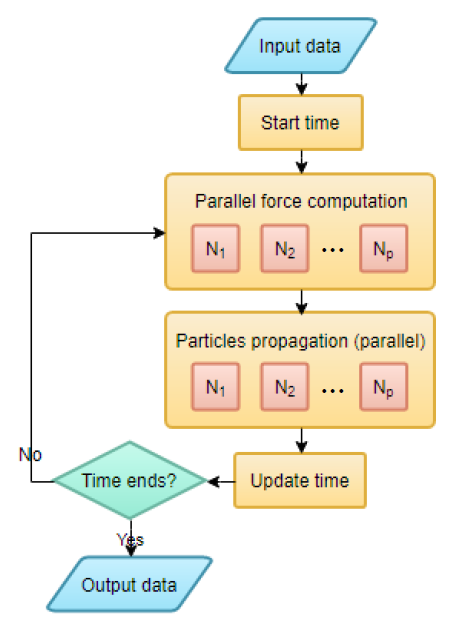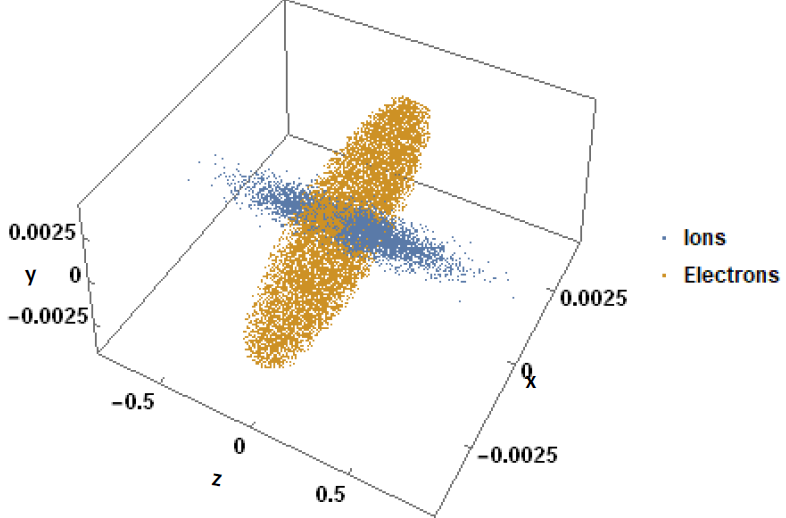- Center for Research Computing Data
- Prospective Users
- Supported Research
- Collisional Simulation Methods for Charged Particle Beam Dynamics and Applications
Collisional Simulation Methods for Charged Particle Beam Dynamics and Applications
Principal Investigator: Bela Erdelyi, Ph.D., Department of Physics.
Charged particle beams play an important role in many areas of science, technology, and industrial processes. Studying their behavior requires accurate and efficient modeling and simulation. Since a typical beam consists of a very large number of particles (up to 10^13 particles per bunch), accurate simulations result in very high memory and CPU demands. In order to model charged particle beams with high accuracy and efficiency, we employed various techniques in developing the Simo Integrator numerical method. For details about the Simo integrator, see Collisional N-body Numerical Integrator with Applications to Charged Particle Dynamics.
In addition, the Simo integrator is used in our novel method PHAD (Particles with High-order Adaptive Dynamics) which gives a more efficient numerical method for the simulation of charged particle beams that is accurate up to machine precision. PHAD utilizes unique techniques to significantly reduce the computational time and enable modeling the long-timescale dynamics. An introduction to the PHAD algorithms is available in A Novel Code with High-Order Adaptive Dynamics to Solve the N-Body Problem.
While the computational time of PHAD is proportional to the number of simulated particles, the computational time of the Simo integrator is proportional to the square of the number of simulated particles. Therefore, both the Simo` integrator and PHAD codes are fully parallelized using the high-performance computing cluster Gaea, and the simulations of charged particle beams were successfully performed. The codes and are available at the Beam Physics Code Repository along with documentation and examples.
One main application of these numerical methods is the electron cooling of ion beams, where PHAD is being benchmarked against experimental data from the low-energy bunched electron cooling of ion beams experiments at IMP. The electron cooling process is challenging because of the importance of collisions as the dynamics are significantly affected by the rare close-encounters, and thus it requires accurate and efficient modeling of collisions that involve a large number of particles over a relatively long time.
Prospective user?


-
For Prospective Users
-
Resources
-
Supported Research
- Critical Current by Design
- Image Reconstruction Software Using Proton Computed Tomography (pCT)
- Advanced-Accelerator Concepts
- Orphan Gene Project
- Computational Materials Science and Mechanics (CMSM) Group
- Vortex Pinning in Thin Superconducting Films and Strips
- High-Throughput Analysis of High-Content Biological Images
- High Precision Modeling of Ultracold Electron Sources
- Collisional Simulation Methods for Charged Particle Beam Dynamics and Applications
-
Getting Access
-
HPC Policies
-
Resources
- Resource Monitors